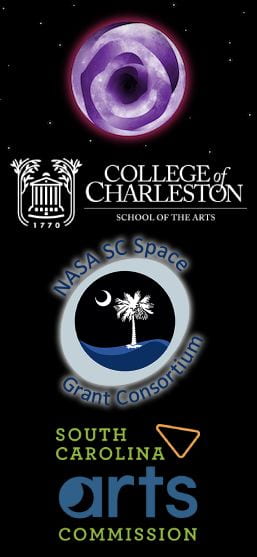Audio/Visual Map of Moon Craters by Felise Horne
We are over-the-moon to announce that our educational puppet play, “That which We Call A Rose,” is now funded not only by NASA’s SC REAP initiative, but also by a generous grant from the SC Arts Commission! This grant will allow us to complete the production of this devised work, and it will also fund bus service for k-12 students in the greater Charleston area to come downtown to see the show when it opens in February.
As an interdisciplinary artist, I am especially thrilled that this work has funding from state and national funds in the arts and the sciences. To me, that is the heart of what STEAM (Science, Technology, Engineering, Arts, and Mathematics) means. All of these areas are necessary for the education of creative, versatile, critical students at all phases of learning. Through the STEAM model, arts do not merely support science learning, and neither does science only provide novel content for arts projects. Art and Science practices provide different, complementary platforms by which all learners might enthusiastically direct their inquiries about the world in which we live.
In this blog, I have shared our moon prototype map. The QR codes reveal the arts and cultural stories behind the names of some of the craters on the moon’s surface. The map is being designed by scenic painter Felise Horne, a graduate of the College of Charleston. The QR codes have been developed by Jack Wolfe. The stories are recorded by myself and company member Javaron Conyers, who is also a graduate of COfC. The QR codes may be accessed on this website on the page dedicated to the Moon.

